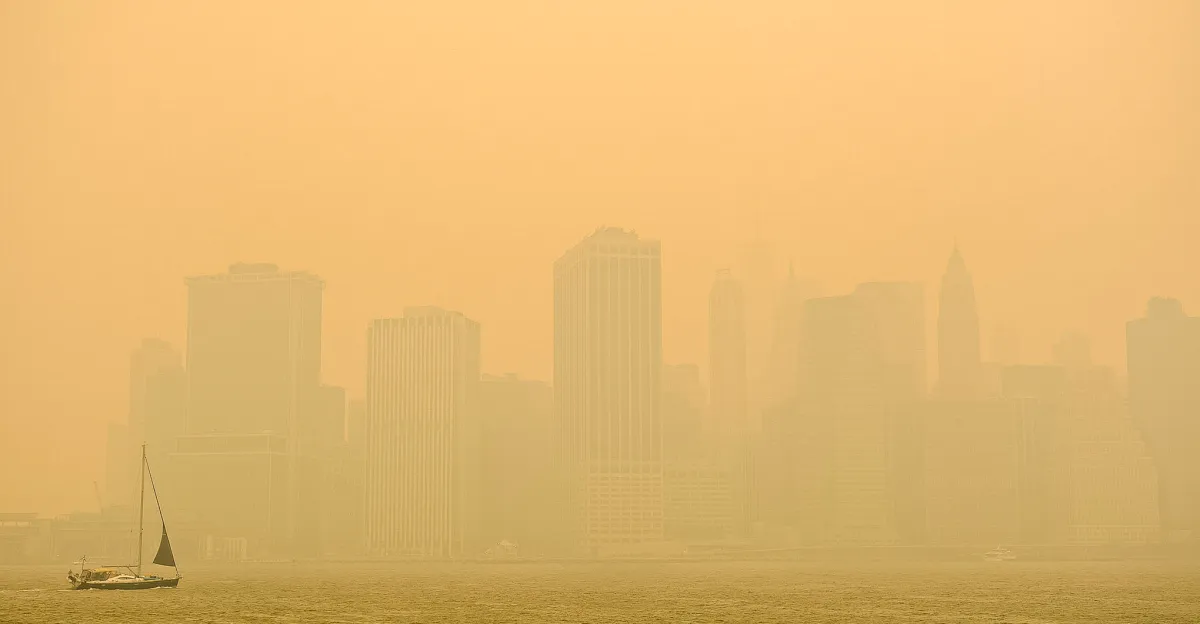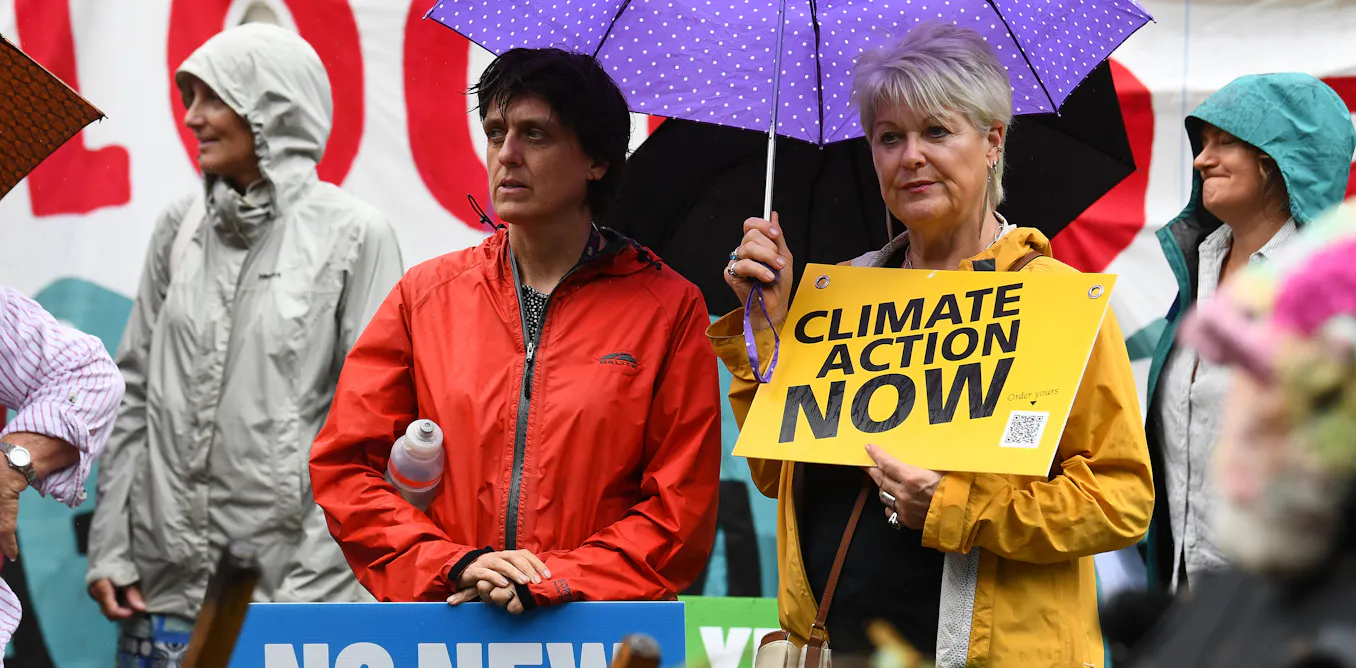
Wildfire smoke is the air quality nightmare of our generation, eating away at previous gains made by cracking down on industrial emissions and tailpipe pollution. Constant exposure to smoke is becoming a chronic threat even in places that historically haven’t had many wildfires.
Climate change is priming forests to burn more intensely, which means more harmful substances in soil, fuels, homes and whatever else burns going up in smoke — and potentially making their way into our lungs. All that smoke is projected to lead to tens of thousands more premature deaths in the coming years, according to a pair of eye-opening research papers published today in the journal Nature.
The findings are a call to action as much as they are a warning. There are clear steps we can take to limit that risk and keep people healthy. But it starts with acknowledging that climate change can hurt public health in ways many of us have already experienced but may not have realized.
“Increasing wildfire smoke is a lived experience now for most people around the US.”
“Increasing wildfire smoke is a lived experience now for most people around the US,” Marshall Burke, a professor at Stanford University and a co-author of one of the papers, said in a briefing with reporters. “Growing wildfire smoke is a much larger health risk than we might have understood previously. One thing that we hope that our study and findings will do is help people understand that risk and thus help us better prepare both as individuals and as communities, but also more broadly, as a society.”
Small particulate pollution from wildfire smoke could lead to more than 70,000 excess deaths each year by 2050 if planet-heating emissions from fossil fuels continue to climb at a business-as-usual pace, Burke and his colleagues found using an ensemble of statistical and machine-learning models. That’s a more than 70 percent increase from the 40,000 excess deaths on average each year over roughly the past decade that the study attributes to wildfire smoke exposure. Translated into economic losses, a common way to quantify health impacts in research, the study finds that the toll would exceed prior estimates for all other climate-related economic damages in the US combined.
Those estimates are higher than previous studies on the health impacts of climate change, primarily because Burke and his co-authors are taking into account the unique effects that particles from wildfire smoke can have on the human body compared to a more generic classification of particulate pollution that typically includes emissions from other sources like factories and cars.
Our understanding of how exactly wildfire smoke affects the body is still a work in progress, in part because it wasn’t always such a consistent source of air pollution. There’s plenty of evidence, of course, that small particulate matter in general can penetrate into the lungs and bloodstream where it can damage our respiratory and cardiovascular systems. Additional problems could crop up depending on what was in the material that burned, and this is sort of a crap shoot when it comes to wildfire smoke. You might find the neurotoxin lead or the carcinogen hexavalent chromium in wildfire smoke, for example, if the heavy metals happen to be in the soil that burns. If the blaze reaches homes or buildings, that creates new risks from chemical-laden products in those structures that go up in flames. Small particles from wildfires can be up to 10 times as toxic as other types of particulate pollution, another study published in Nature in 2021 found.
Estimates of wildfire smoke-linked premature deaths in the US are based on data from fires between 2001 and 2021, and recorded deaths between 2006 and 2019. That avoids complications from including data during the covid-19 pandemic, but it also excludes some of the most extreme wildfire smoke events recently — like when smoke from infernos in Canada turned skies orange in the northeast US in 2023. As a result, the study might actually underestimate the health impact of wildfire smoke along the east coast of the US, its authors say. New York and Pennsylvania are among the top five states predicted to see the biggest increases in smoke-related premature deaths, according to the study. They join states out west — California, Washington, and Texas — historically more notorious for dangerous wildfire seasons.
The number of large fires doubled in the western US between 1984 and 2015 as rising temperatures create more arid conditions that dry out forest vegetation faster. Similar trends are playing out around the world. The number of premature deaths from wildfire smoke globally could grow sixfold, reaching 1.4 million each year by the end of the century, the other Nature study published today found through a machine learning-based approach trained on historical data from burned areas.
These scenarios aren’t necessarily baked into our future, giving us time to act. “The key technology here, as best we understand, is filtration,” Burke says, mentioning portable air filters and central HVAC systems that can help reduce exposure to wildfire smoke today. The issue is making sure this solution is available across the board. “Many people can afford a few hundred-dollar filter, others cannot, and so we need to make sure that people have access,” he says. And there are other things people can do to protect themselves at low cost, including following air quality alerts and taking precautions like closing windows even on moderately smokey days.
It’s going to take broader changes to protect public health, including rethinking the way we fight fires. Efforts to suppress all naturally occurring fires have led to a buildup of dead and drying vegetation in America’s forests, enough fuel to make fires more explosive than they otherwise would have been. Fires are a normal part of many ecosystems, and some Indigenous peoples have traditionally practiced controlled burns to manage their lands and maintain forest health. Controlled fires, also called prescribed burns, create smoke too, of course. But the risks are more easily mitigated by controlling where and when the fire burns, avoiding urban areas and very windy days.
“This is going to be a trade off,” says Minghao Qiu, a professor at Stony Brook University and one of Burke’s coauthors. But “we’ll be able to manage our vegetation and that will reduce the likelihood of future catastrophic fire risk.”
Now, the US — under a president who has called climate change a hoax and is undermining research and action on the problem to try to boost fossil fuel profits — is proposing eliminating limits to the greenhouse gas pollution heating the planet. To do so, the Environmental Protection Agency under the Trump administration is attempting to rescind its previous pivotal finding that greenhouse gas emissions endanger public health. The agency is accepting public comment on the matter until September 22nd.
This new study just adds to the mountains of research that shows climate change, caused by greenhouse gases, absolutely threatens public health. “Our results provide some of the strongest evidence that a warming climate endangers the health of US citizens,” Burke says.



